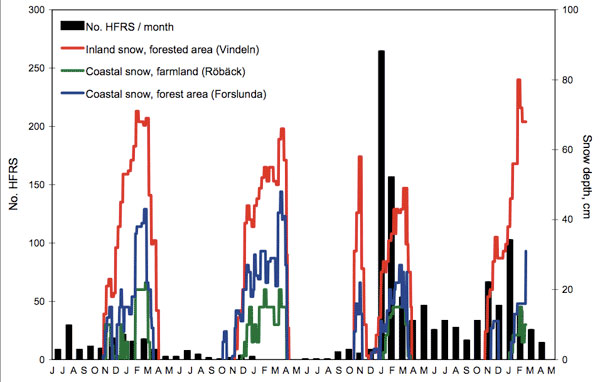Volume 15, Number 1—January 2009
Dispatch
Predicting High Risk for Human Hantavirus Infections, Sweden
Appendix Figure

Appendix Figure. Human cases of hemorrhagic fever with renal syndrome (HFRS) per month from HFRS-endemic Västerbotten County, Sweden, July 2004 through June 2008, and measured snow depth at 3 locations through February 2008. The season 2004–05 represents the most recent epidemic peak year, before the large outbreak of 2006–07; 2005–06 represents an ordinary low-incidence season. The exceptional increase of HFRS cases in midwinter 2006–07 followed a rapid snowmelt and complete loss of protective snow cover to the voles during December 2006 in inland and coastal areas. Similarly, the less pronounced increase in midwinter 2007–08 followed a less abundant loss of snow cover only in the coastal area.
Page created: November 22, 2010
Page updated: November 22, 2010
Page reviewed: November 22, 2010
The conclusions, findings, and opinions expressed by authors contributing to this journal do not necessarily reflect the official position of the U.S. Department of Health and Human Services, the Public Health Service, the Centers for Disease Control and Prevention, or the authors' affiliated institutions. Use of trade names is for identification only and does not imply endorsement by any of the groups named above.